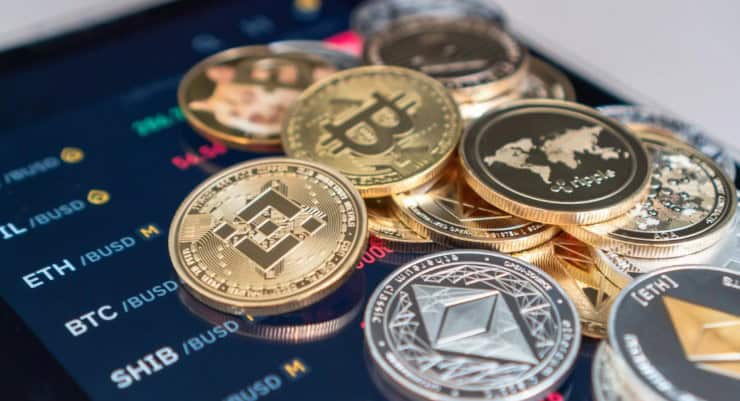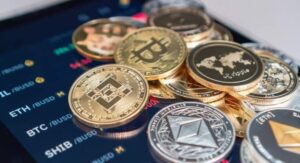Accelerating the transition to a green economy is a necessity. This column argues that the green transition will create trade-offs for central banks. Phasing out polluting technologies is likely to temporarily slow down productivity growth, thus creating inflationary pressures. If central banks choose to ‘look through’ and let inflation temporarily rise, inflation expectations may de-anchor. A tight monetary policy approach, instead, will lead to unemployment, lower investments in green technologies, and potentially permanent damages to GDP and the green transition. Fiscal and credit policies that sustain green investments may be the best option to address these trade-offs.
It is a shared understanding that accelerating the transition towards a green economy is imperative (Bilal and Kanzig 2024). What are the challenges that central banks are going to face during the green transition? In a recent report written for the Bank of International Settlements (Fornaro et al. 2024), we propose a framework to address this question.
Our starting point, as argued by Jean Pisani-Ferry and Selma Mahfouz (Pisani-Ferry and Mahfouz 2023), is that the transition will involve a structural transformation of our economies away from polluting technologies and towards clean ones. Green regulations, by constraining the use of polluting technologies, will trigger a rise in the price of dirty goods relative to clean ones. Lower access to polluting technologies will slow down productivity growth, unless green technologies are developed and adopted sufficiently fast. As we argue, these forces will confront central banks with a ‘green dilemma’.
The inflationary consequences of the green transition
We consider an economy in which production is carried out using two types of intermediate goods: clean and dirty. Clean goods are produced using non-polluting technologies, while production of dirty goods degrades the quality of the environment. As in the New Keynesian tradition, monetary policy has real effects because of nominal (wage) rigidities.
We model the green transition as a gradual tightening of a production cap, or supply constraint, on dirty goods. This constraint may represent a limit on carbon emissions imposed by green regulations, such as the emission caps imposed by the EU Emissions Trading System, or even carbon tax policies designed to hit some emissions reduction target. The underlying assumption is that the regulator internalises the long-term costs of climate change, although we do not model them explicitly.
When the supply of dirty goods is constrained by regulation, their relative price increases, inducing a desirable reallocation of production towards clean goods. However, the rise in the relative price of dirty goods is a source of inflationary pressures (see also Del Negro et al. 2023).
More precisely, supply constraints on dirty goods give rise to a non-linear aggregate Phillips curve: relatively flat when employment is low enough so that supply constraints on dirty goods are slack, and steep when employment exceeds the threshold that makes supply constraints bind (Figure 1). In the latter case, an increase in employment not only leads to the standard rise in nominal wage growth, but also to an increase in the relative price of dirty goods. As green regulations become tighter, supply constraints on dirty goods start binding at lower levels of employment. As a result, a larger portion of the Phillips curve becomes steeper.
Figure 1 Non-linear Phillips curve during the green transition


This observation carries two important implications. First, during the green transition central banks are going to face a worse trade-off between inflation and employment. Second, business cycle fluctuations driven by demand shock may give rise to high inflation volatility. Intuitively, periods of high aggregate demand are associated with binding supply constraints on dirty goods, causing sharp rises in their relative price and in overall inflation. When aggregate demand is low, instead, supply constraints on dirty goods are slack, inflation falls somehow, but not enough to compensate for the rise in inflation during demand-driven booms.
Endogenous technological change during the green transition
The development and adoption of green technologies has the potential to reconcile carbon emissions reductions and healthy productivity growth (Hemous et al. 2009). To take this effect into account, we introduce endogenous technological change in polluting and green technologies. Tighter supply constraints on dirty goods now also foster a reallocation of investment towards green technologies, mitigating the productivity losses due to the phasing out of polluting goods. The strength of this force, however, is partly determined by the monetary policy stance.
As it is intuitive, in our model a monetary contraction depresses investment. But, more interestingly, we show that this effect is stronger for green technologies. This is due to two effects. First, monetary policy affects investment through its impact on interest rates and the cost of capital. However, due to the progressive tightening of green regulations, firms producing dirty goods have a short time horizon ahead. Hence, their investment decisions are not that sensitive to changes in interest rates.
Second, monetary policy affects investment by determining aggregate demand and firms’ profits. For instance, a monetary expansion stimulates investment because the associated increase in aggregate demand makes it more profitable for firms to build up their productive capacity. But healthy aggregate demand favours particularly green investments, because environmental regulation prevents dirty firms from expanding. This creates an additional trade-off for central banks. A narrow focus on maintaining inflation at target in the short term may discourage green investments and impair productivity over a longer horizon, which implies higher inflation later.
We provide some novel empirical evidence in support of this effect, by studying how investments by green firms react to monetary policy shocks. 1 For instance, Figure 2 shows that an unexpected monetary contraction has a particularly negative impact on R&D investments by green firms. Our results are in line with the practitioners’ view that monetary and financial factors are particularly salient for green investments (Martin et al. 2024), as well as with recent evidence by Aghion et al. (2024), who show that investments in green technologies by German automotive firms are especially sensitive to monetary shocks.
Figure 2 Effect of a 25 basis points negative monetary shock on green and non-green investment in R&D (US Compustat data on listed companies)


This empirical evidence suggests that it is important to consider the impact of monetary policy on green investments.
A green dilemma for central banks
We are now ready to use our framework to consider the dilemma that central banks will face during the green transition. Figure 3 shows a simulated path of the green transition under different policy configurations.
One option is to ‘look through’ the inflationary shock triggered by the phasing out of dirty technologies (blue lines). The benefit of this approach is that a temporary rise in inflation speeds up the rise in the relative price of dirty goods needed to phase out dirty technologies. Moreover, a ‘look through’ approach guarantees high employment during the transition. But, even though we don’t model this explicitly, there is a risk that high inflation may induce a de-anchoring of inflation expectations.
A second possibility is to implement a tight monetary policy, suppressing the inflationary impulse coming from the green transition (red lines). The problem with this strategy is that maintaining inflation on target requires high economic slack and substantial unemployment. Moreover, a tight monetary policy approach will discourage green investments. On the one hand, this will lead to permanent productivity and GDP losses. On the other hand, this will slow down the transition towards a clean economy.
Figure 3 Different policy mixes during the green transition


The role of green fiscal and credit policies
As we have seen, the green transition may represent a significant challenge for central banks. But coordination between monetary, fiscal, and credit policies may be the key to a smooth transition, reconciling the greening of our economies with high economic activity and low inflation. We argue that fiscal subsidies and target credit policies supporting green investments may play a crucial role.
This policy mix is illustrated by the green lines in Figure 3. There we assume that monetary policy is sufficiently tight to maintain inflation on target during the transition, but fiscal subsidies and targeted credit policies insulate green investments from the negative impact of monetary contractions.
There are two results worth highlighting. First, subsidising green investments reconciles low inflation with a swift green transition. Second, the output losses needed to maintain inflation on target are now much smaller and transitory. This happens because the pro-green fiscal and credit policies undo the negative impact of monetary contractions on productivity and output over the medium run. In addition, fast productivity growth in the green sector acts as a disinflationary force, reducing the need for the central bank to implement a tight monetary policy to maintain inflation on target.
In sum, policy interventions fostering green investments may not only be useful because they reconcile phasing out polluting technologies with healthy productivity growth. They can also fulfil a useful macroeconomic stabilisation role and complement traditional monetary policy to guarantee high economic activity and low inflation during the green transition.
Source : VOXeu





































































